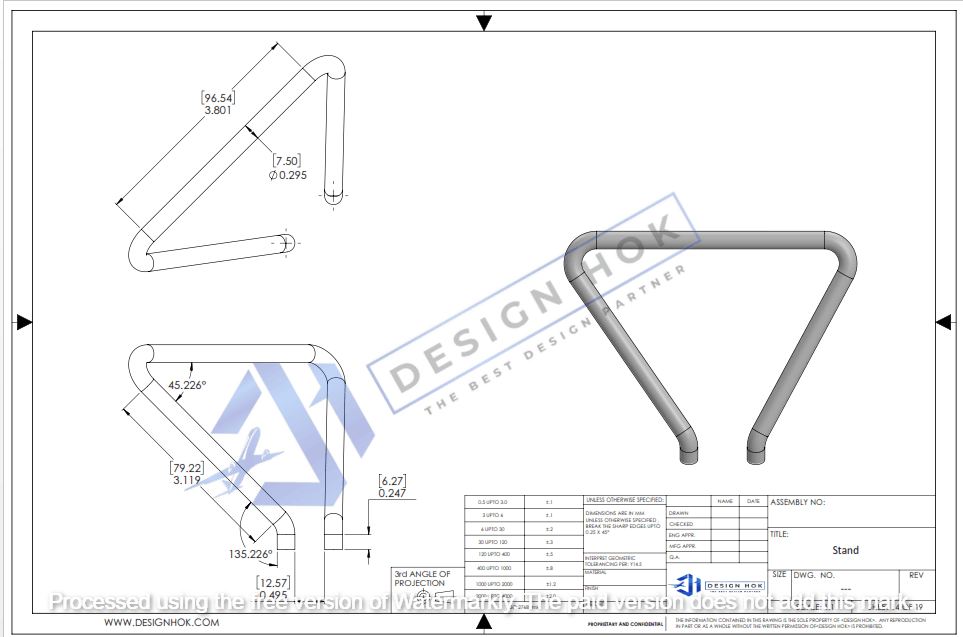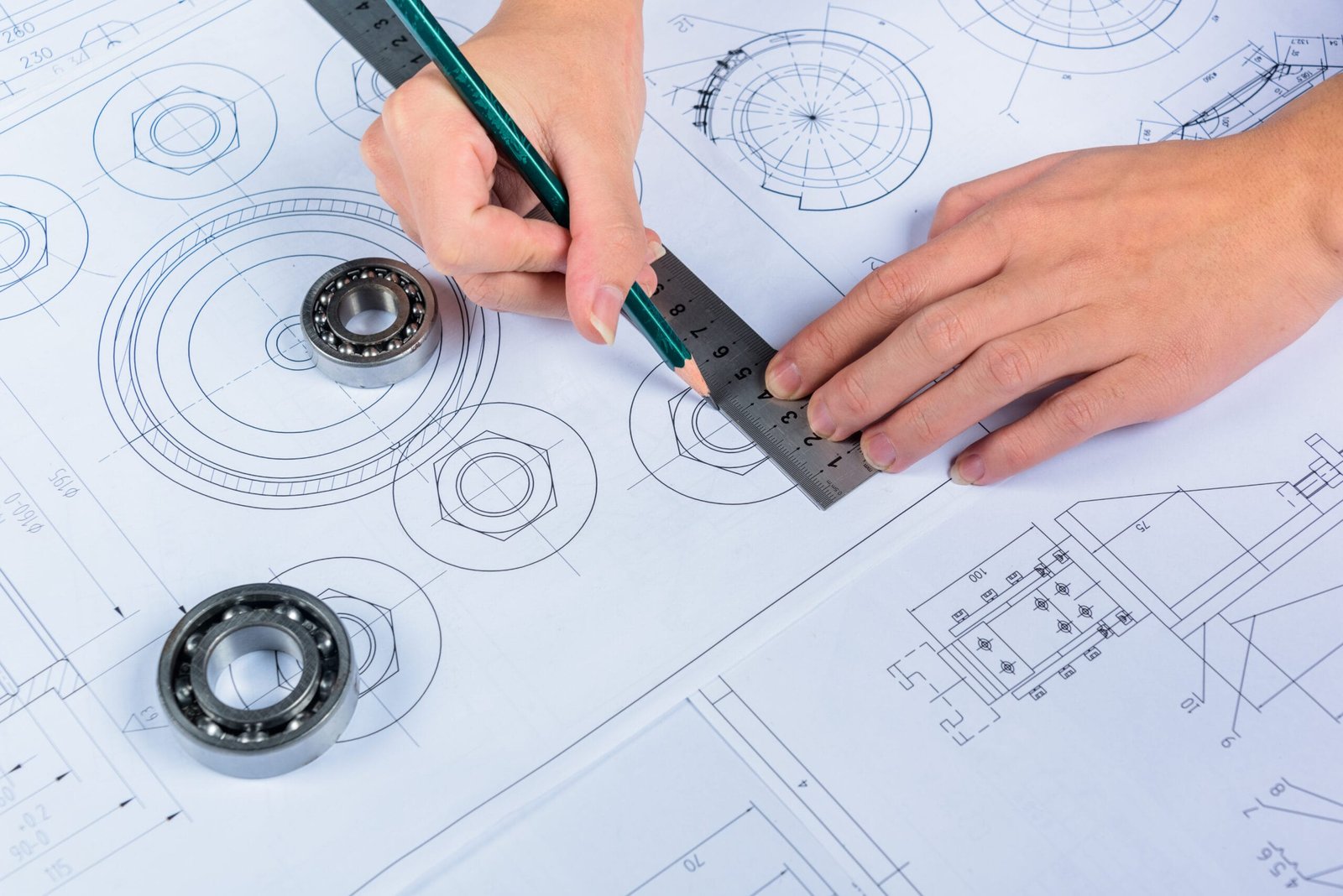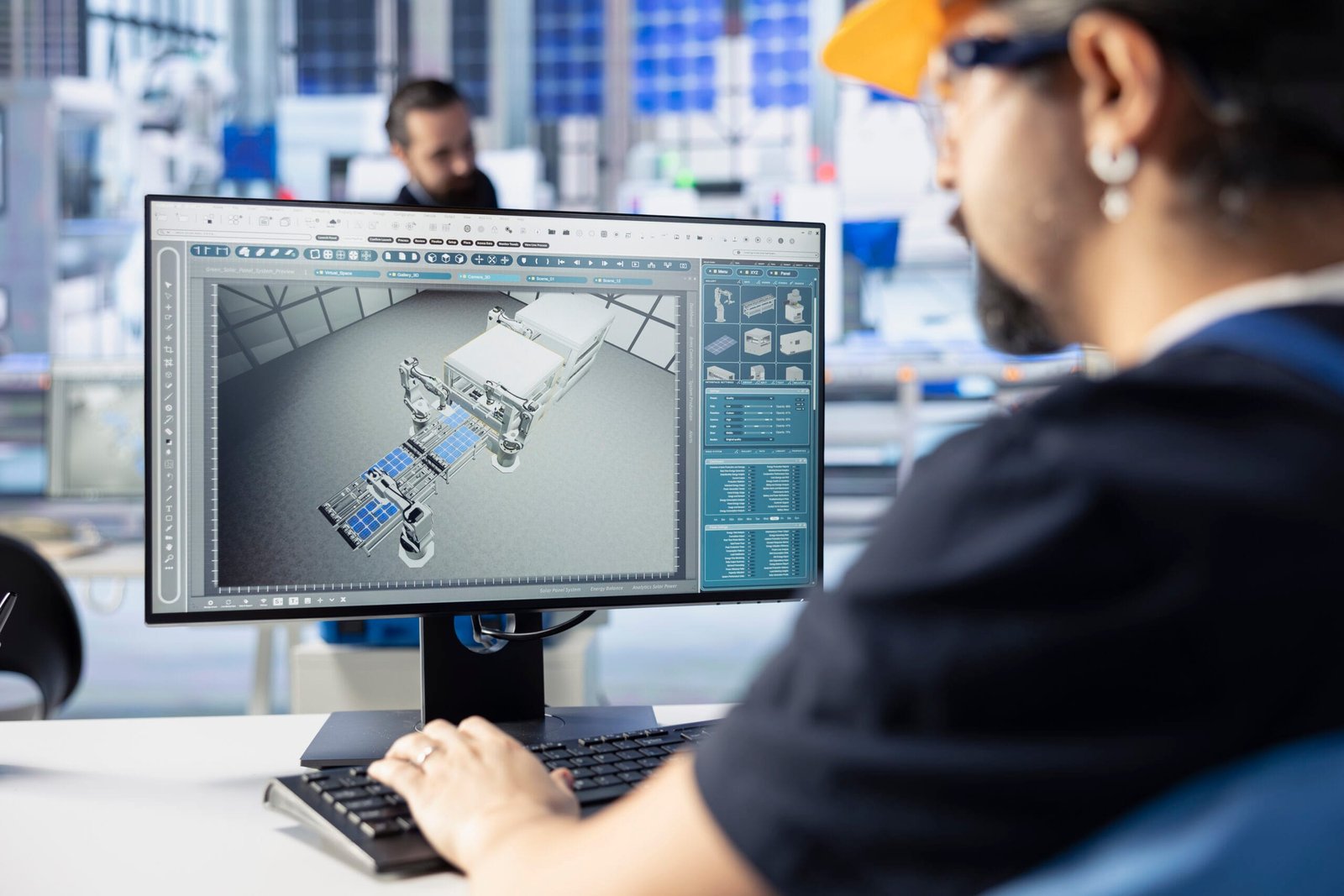Introduction
The Aviation Design Outsourcing industry is growing fast, with more demand for new aircraft, advanced systems, and lighter materials. But designing aviation systems is complex, costly, and time-consuming. That’s why more companies are choosing Aviation Design Outsourcing to meet deadlines, lower costs, and improve quality.
In this article, we’ll explore everything you need to know about aviation design outsourcing: what it is, how it works, its key benefits, challenges, how to choose the right partner, and how it helps manufacturers and aerospace startups scale efficiently.
What is Aviation Design Outsourcing?
Aviation design outsourcing means hiring an external company or team to handle part or all of your aircraft design work. These external partners can help with:
- Aircraft structural design
- Interior and cabin design
- Electrical systems
- Mechanical and hydraulic systems
- CAD modeling and 2D/3D drawings
- System integration
- Technical documentation
Instead of hiring a full in-house design team, companies can outsource to expert engineers and designers who work remotely or on-site.
Why Do Companies Aviation Design Outsourcing?
There are several reasons why Aviation Design Outsourcing is becoming popular:
- High engineering costs in Western countries
- Shortage of skilled aviation engineers
- Need to speed up development
- Focus on core competencies
- Access to new technology and tools
- Reduction in operational risks and overhead
By outsourcing, companies can manage workloads better and reduce project delays while staying within budget.
Benefits of Aviation Design Outsourcing
1. Cost Savings
Aviation Design Outsourcing helps reduce labor, equipment, training, and infrastructure costs. Companies can save up to 40-60% by outsourcing to countries with lower wages but high skills like India, Eastern Europe, or Southeast Asia.
2. Access to Expert Talent
Outsourcing partners often have teams of aerospace engineers, CAD designers, and specialists who have experience in civil and defense aviation. You get immediate access to top talent without long hiring processes.
3. Faster Turnaround Time
Experienced outsourcing teams use the latest software and methods to deliver designs faster. They often work in different time zones, allowing 24/7 progress on projects.
4. Flexible Scaling
Need to scale your design team for a big project? Outsourcing makes it easy to ramp up or reduce resources without long-term contracts or layoffs.
5. Latest Design Tools and Software
Aviation Design Outsourcing partners often use advanced tools like CATIA, SolidWorks, NX, and AutoCAD. You get access to licensed software and skilled users without needing to invest in them directly.
6. Focus on Core Work
By Aviation Design Outsourcing, your in-house team can focus on other tasks like strategy, marketing, or production. This improves productivity across departments.
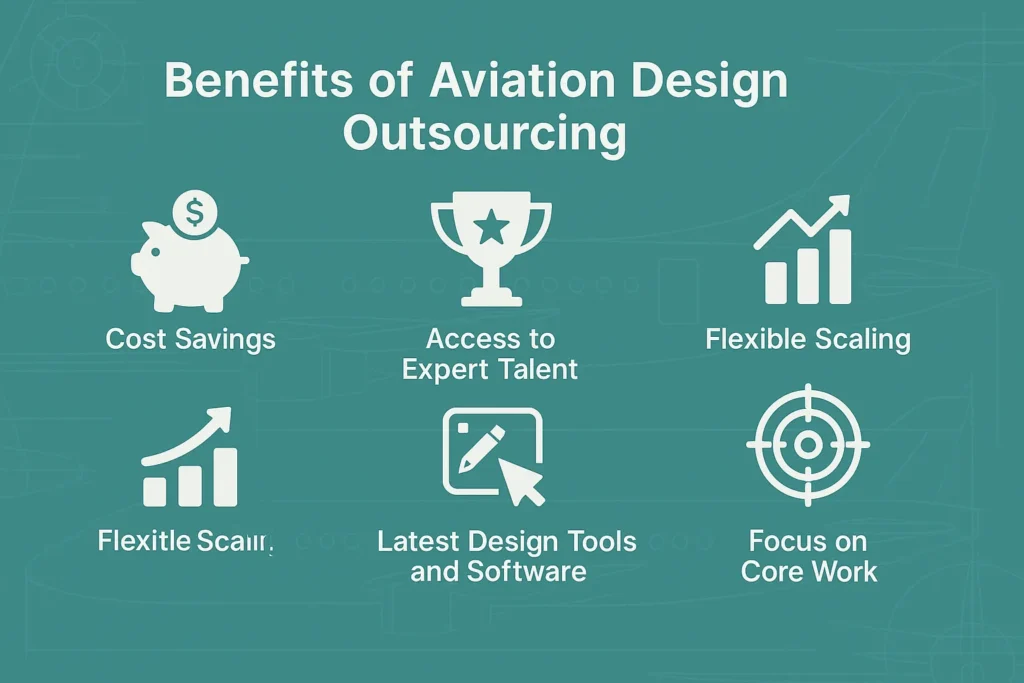
Types of Aviation Design Services You Can Outsource
A. Aircraft Structural Design
Aviation Design Outsourcing the creation of airframe designs, wing layouts, and fuselage structures that meet safety and weight standards.
B. Electrical and Avionics Design
Get help with electrical routing, avionics systems integration, and EMI/EMC compliance.
C. Interior and Cabin Design
Experts can design seating layouts, lighting systems, and interior aesthetics for commercial or private aircraft.
D. Mechanical and Hydraulic Systems
Outsourcing firms can handle the design of landing gear, actuator systems, and engine-related components.
E. 2D Drafting and 3D Modeling
Receive detailed CAD drawings, 3D models, and engineering documents ready for production and review.
F. Technical Documentation
Many aviation firms also offer help with manuals, compliance documents, bill of materials (BOM), and certification files.
How the Aviation Design Outsourcing Process Works
Step 1: Requirement Analysis
You share your project scope, technical specs, timelines, and goals with the outsourcing partner.
Step 2: Proposal and Planning
The partner submits a plan with deliverables, timelines, software tools, team members, and pricing.
Step 3: Execution
Design work begins. You receive regular updates, drawings, and prototype files. Feedback loops are managed through agile or waterfall methods.
Step 4: Review and Testing
Designs are validated through simulations or tests. Revisions are made as needed.
Step 5: Final Delivery
Once approved, the final design package is delivered with source files and documents.
Common Challenges in Aviation Design Outsourcing
Communication Issues
Different time zones, accents, or unclear instructions can cause delays. Use project management tools and clear documentation to reduce this risk.
Quality Control
Not all vendors meet aerospace design standards. Ensure your partner is familiar with AS 9100, ISO 9001, or FAA/EASA regulations.
Data Security
Sharing sensitive data is a risk. Use NDAs, encrypted tools, and cybersecurity best practices.
Cultural Differences
Work style or holidays may vary by region. Build strong relationships and maintain open communication to overcome this.
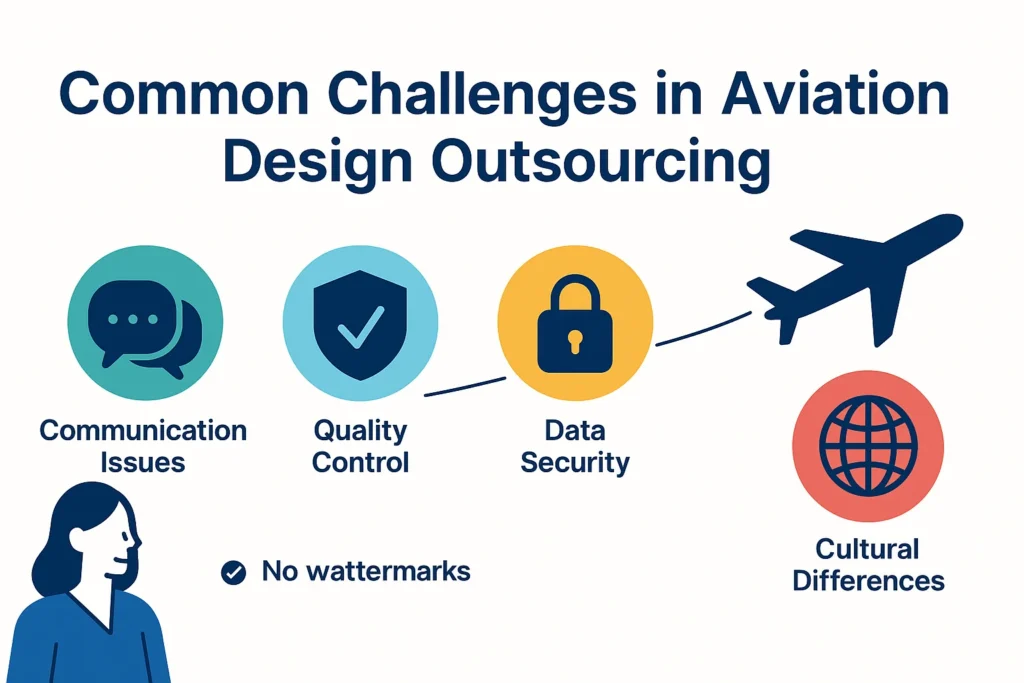
How to Choose the Right Aviation Design Outsourcing Partner
- Check Experience in Aerospace Projects
Look for a partner with real-world projects in commercial, military, or private aviation. - Certifications and Compliance
Verify they follow industry standards like AS 9100, ITAR, or ISO 27001 for data security. - Technical Skills and Software
Make sure they use your preferred tools like CATIA, AutoCAD, or SolidWorks. - Check Past Projects and Case Studies
Ask for samples, portfolios, and references. - Trial Project or Pilot Test
Start with a small design project to test their capabilities before scaling up.
Future of Aviation Design and the Role of Outsourcing
As aviation moves toward sustainable fuel, electric aircraft, autonomous drones, and AI-driven systems, the need for specialized design knowledge is growing. Outsourcing helps companies stay agile and tap into global expertise fast.
With trends like digital twins, composite materials, and additive manufacturing (3D printing), outsourcing partners will play a bigger role in helping aviation companies innovate.
SEO & NLP Tips Integrated in This Article
- Repeated keyword: aviation design outsourcing (main term)
- Semantic phrases: aircraft design outsourcing, aerospace CAD services, aviation engineering support
- Long-tail phrases: benefits of outsourcing aviation design, how to outsource aircraft design
- Natural transitions and synonyms used for indexing (e.g., external partners, vendors, service providers)
- Structured data points and FAQs for AEO optimization
Conclusion
Aviation Design Outsourcing is a powerful strategy for aerospace companies aiming to reduce costs, speed up innovation, and deliver high-quality products. Whether you’re a startup designing your first aircraft or a large OEM looking to scale, outsourcing gives you the tools, talent, and flexibility to compete in the global aviation market.
By choosing the right partner, setting clear expectations, and using modern tools, aviation design outsourcing becomes a seamless extension of your engineering team.
Frequently Asked Questions (FAQ)
Q1: What is aviation design outsourcing?
It means hiring an external team or company to design aircraft parts, systems, or documentation instead of using your in-house engineers.
Q2: What are the main benefits of outsourcing aircraft design?
The key benefits are cost savings, faster delivery, access to expert engineers, and flexibility to scale resources when needed.
Q3: Is aviation design outsourcing safe and reliable?
Yes, if you choose a certified and experienced partner who follows aviation standards like AS 9100 and has data security practices in place.
Q4: What types of design work can be outsourced in aviation?
You can outsource structural design, cabin layout, CAD drafting, electrical systems, hydraulic systems, and technical documentation.
Q5: Which companies should consider outsourcing aviation design?
Startups, small OEMs, aviation consultants, and even large manufacturers can benefit from outsourcing design tasks to save time and cost.
Q6: How do I find a trusted aviation design outsourcing company?
Look for companies with aerospace experience, technical certifications, modern tools, and positive client reviews. Start with a pilot project to test their fit.

